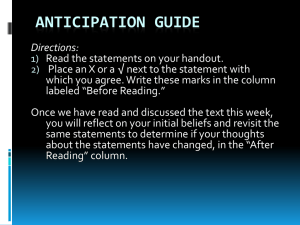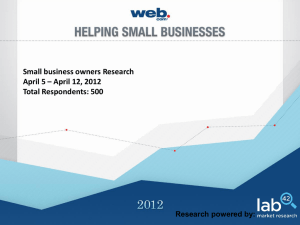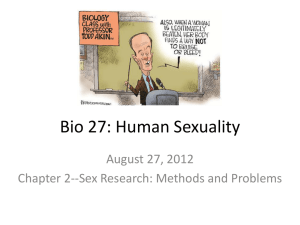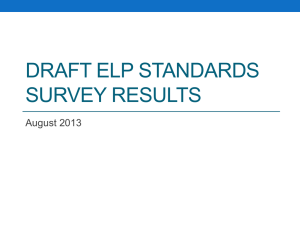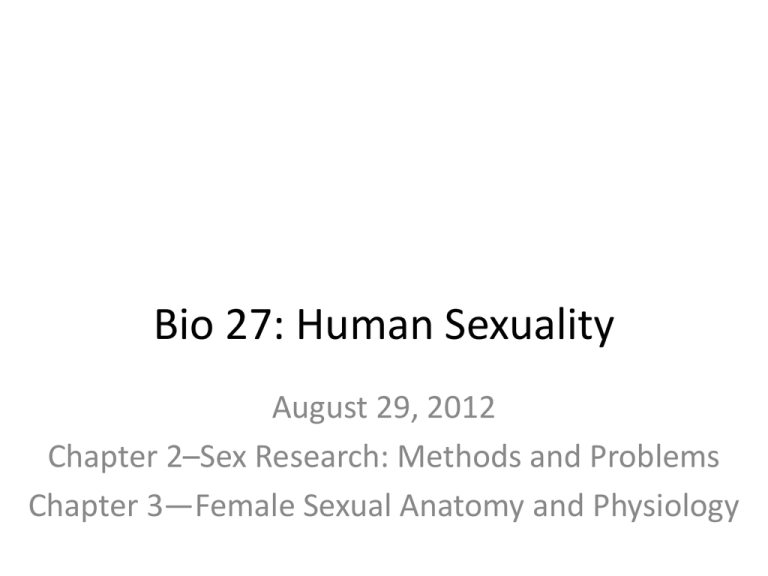
Bio 27: Human Sexuality
August 29, 2012
Chapter 2–Sex Research: Methods and Problems
Chapter 3—Female Sexual Anatomy and Physiology
Important announcement!
This class now has a Twitter:
https://twitter.com/Bio27Laney
Go there for:
• Links to download lecture slides
• Interesting retweets & links
“The federal government should not
spend money on sexology research”
How strongly do you agree or disagree with this
statement? Explain your answer.
1
2
3
4
5
strongly
disagree
somewhat
disagree
neutral
somewhat
agree
strongly agree
1: Strongly Disagree
“I think that it would be good to learn how
people should prevent diseases from
spreading, and how to allow the education
of sex. It would be a good knowledge to
stop teen pregnancy and help understand
safe and protected sex”
1. Strongly Disagree
“I strongly disagree because sexuality in
the modern world is changing. We have
science to help us understand other
lifestyles, sexualities, and gender. As
humans I feel we should understand all
forces of human nature and different
biologies, to change the status quo.”
2. Somewhat disagree
“I mostly disagree with this statement, because
it is not very clear. Sexology should be studies
however the money should not just be handed
out to any sexology research. Now I would
assume this, but since the question is vague I
cannot completely disagree with it, for
instance there should not be a research done
on sexual arousal while using a yo-yo, there are
limits.”
2. Somewhat disagree
“I somewhat disagree because althoug
some research on sexual behavior may
seem irrelevant compared to other issues
such as cancer cures but there are also
some sexology research which are very
helpful, e.g. condom use projects, as they
could help reduce STD’s including HIV/AIDS
which is a fatal illness.”
The Experimental Method:
Procedures
• The Experimental Method is how most
scientific research is conducted
• Conditions are manipulated by scientists
usually in a laboratory setting
• Observations & previous knowledge lead
to the development of a testable
hypothesis
• Hypothesis: a proposed answer to a
scientific question
The Experimental Method:
Procedures
• Independent variable: condition or
component that is manipulated
• Dependent variable: what is being
measured
• Ideally want all experimental groups to be
the same except for the independent
variable!
The Experimental Method
• Advantages:
– Lowers the influence of other variables
– Can establish cause-effect relationships
• Disadvantages:
– Being measured may affect actions
– Artificiality of laboratory setting
Use of the experimental to study
sexual behavior
• Observation: men under the influence of alcohol
often exhibit impaired sexual performance
• Experiment: 48 male college students watched a
sexually explicit film while wearing a penile strain
gauge. They then repeated this action after
drinking alcohol
• Conclusion: Alcohol decreased sexual arousal,
and the degree of reduction was related to the
amount of alcohol consumed
Human studies: ethical issues
• Prior to 1948, few
restrictions on scientific
studies in humans
• Tuskegee experiment in
U.S.
• Following cruel
experiments performed
by the Nazis, increasing
awareness that human
subjects of scientific
studies should be given
certain rights in the
1950s-1960s
Ethical Guidelines for Human Sex
Research
• No pressure or coercion for participation
– Controversy over paying subjects for participation
• Informed consent and voluntary participation
• Confidentiality and anonymity
• Question of deception: don’t always want to tell
subjects in advance what is being studied
• Institutional ethics review
Use of animals in sexology research
• Most medical research in this country,
including sexology research, is performed on
laboratory animals
• 95% of laboratory animals are rats and mice
• Mice are about 85% genetically similar to
humans, but some substantial differences,
too!
• Most mammalian females will only participate
in sexual behavior when in estrus
Use of animals in sexology research
• Ethical concerns about
the use of animals
• More invasive
procedures are
permitted, but must be
approved
• Extensive laws protect
the rights of lab animals
• Some more protected
than others
Evaluating Research:
Questions to Ask
• Why was the research done? Who did the research?
Who paid for the research? What are their credentials?
What biases are there?
• Who were the participants? How were they selected &
assigned to groups?
• How was the research conducted? What methods were
used?
• Where was the research reported? What additional
support is there?
CHAPTER 3
FEMALE SEXUAL ANATOMY AND
PHYSIOLOGY
The Vulva
Vulva = External female
genitalia; consist of:
•
•
•
•
•
Mons veneris
Labia majora
Labia minora
Clitoris
Vestibule
• Urethral opening
• Introitus & hymen
Vulvas are diverse
“Design a Vagina,” by Jamie McCartney
The Clitoris
• Analogous to the male penis, but only function is
sexual arousal
• Clitoral stimulation most common way women
achieve orgasm
• Female genital cutting usually involves removal of
some or all of the clitoris:
– Religious/cultural reasons (“female circumcision”)
– Medical reasons: intersex
Anatomy of the clitoris
• Covered by a flap of
tissue called the hood
• Smegma: a combination
of genital secretions,
dead skin cells, and
bacteria, can
accumulate under the
clitoral hood
• Glans of the clitoris is
generally visible; shaft is
covered by the hood
The Vulva
• Vestibule (inside the labia minora)
– Urethral opening
– Vaginal introitus (opening)
• Hymen
• Perineum
– May be cut during episiotomy for childbirth
Underlying Structures: Pelvic floor
muscles
• Pelvic floor muscles
– Often
weakened/damaged
by childbirth and with
age
– Can be strengthened
by Kegel exercises







